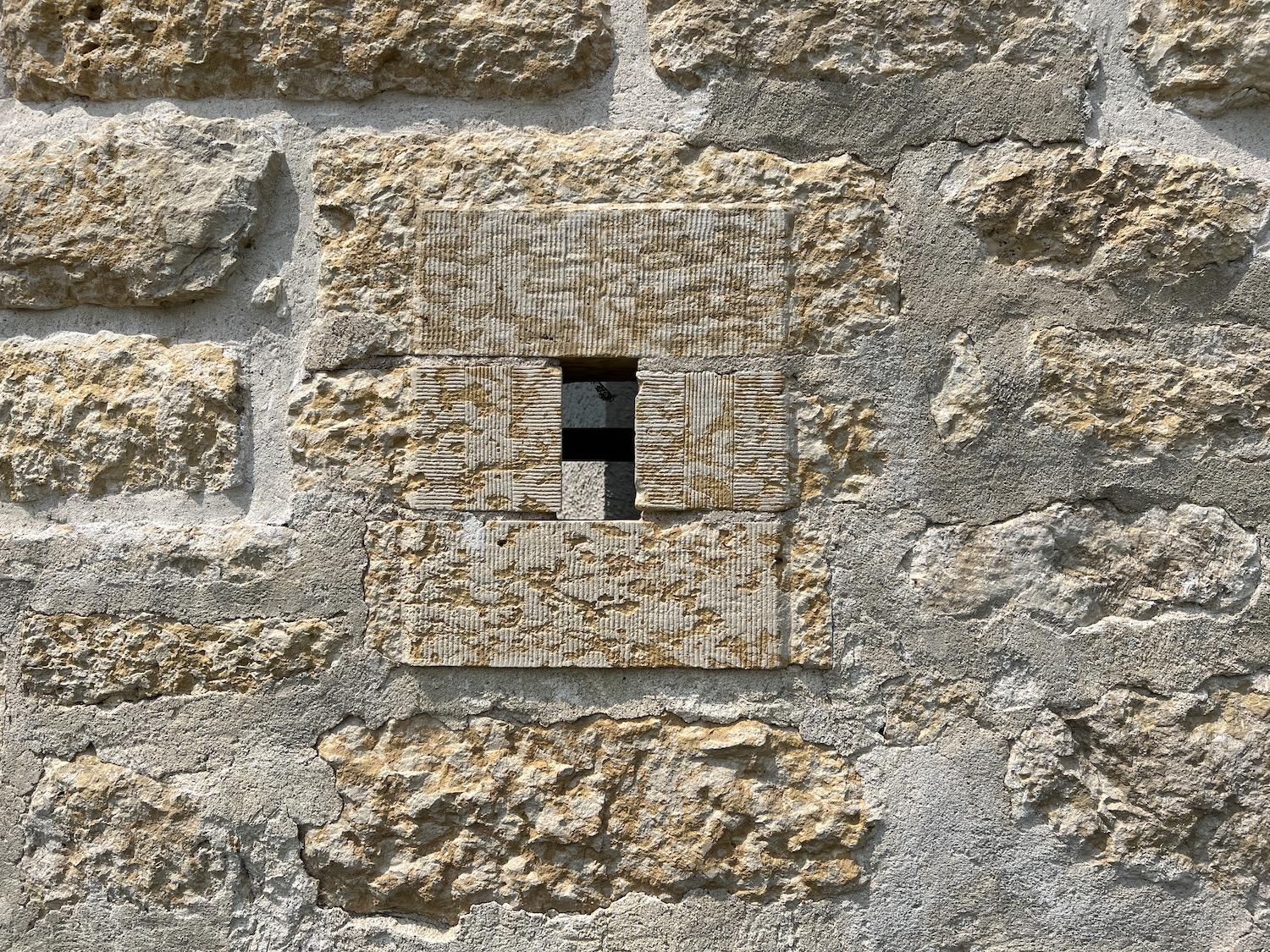
Look for fossils in the mottled Tyndall Stone at Lower Fort Garry National Historic Site/Jennifer Bain
As people meander through Lower Fort Garry National Historic Site, engaging with costumed interpreters acting like they’re living in a booming fur trade complex in the 1850s, I only have eyes for the inanimate stone walls.
This isn’t just any ordinary limestone. The cream-colored Tyndall Stone is only found in Canada and only quarried here in Manitoba. It has a unique, tapestry-like mottling because it contains fossil fragments from marine organisms that lived at the bottom of an ancient sea that once covered this province.
It’s also the only Canadian stone designated by the International Union of Geological Sciences as a global heritage stone resource. That group, when adding Tyndall Stone to its prestigious list just this year, lauded its “broad significance to humanity.”

Inside Lower Fort Garry's stone walls is this stone fur loft/sales shop, built between 1830 and 1831/Jennifer Bain
The stone was discovered in 1823 by Hudson’s Bay Co. staff who spotted a limestone exposure along the banks of the Red River near Selkirk. The HBC immediately starting using what was then called local limestone as a building material at Lower Fort Garry and a nearby church and rectory that are also national historic sites.
It took more than 70 years before a farmer digging a well found a major deposit and quarrying began in earnest. The stone was hauled to the nearby community of Tyndall — hence the name — to be shipped away by rail. Drive through the provincial capital of Winnipeg and you’ll see plenty of Tyndall Stone. It has been used everywhere from the parliament buildings in Ottawa and the Canadian Museum of History in Quebec to the Canadian embassy in Berlin and Canada House in London.
Lower Fort Garry, a short drive north of Winnipeg on the banks of the Red River, is a national historic site in part because it has one of the best collections of early stone buildings in western Canada. “Their design and craftsmanship are one part of the story,” interpretive signs reveal. “Their changing uses are another.”
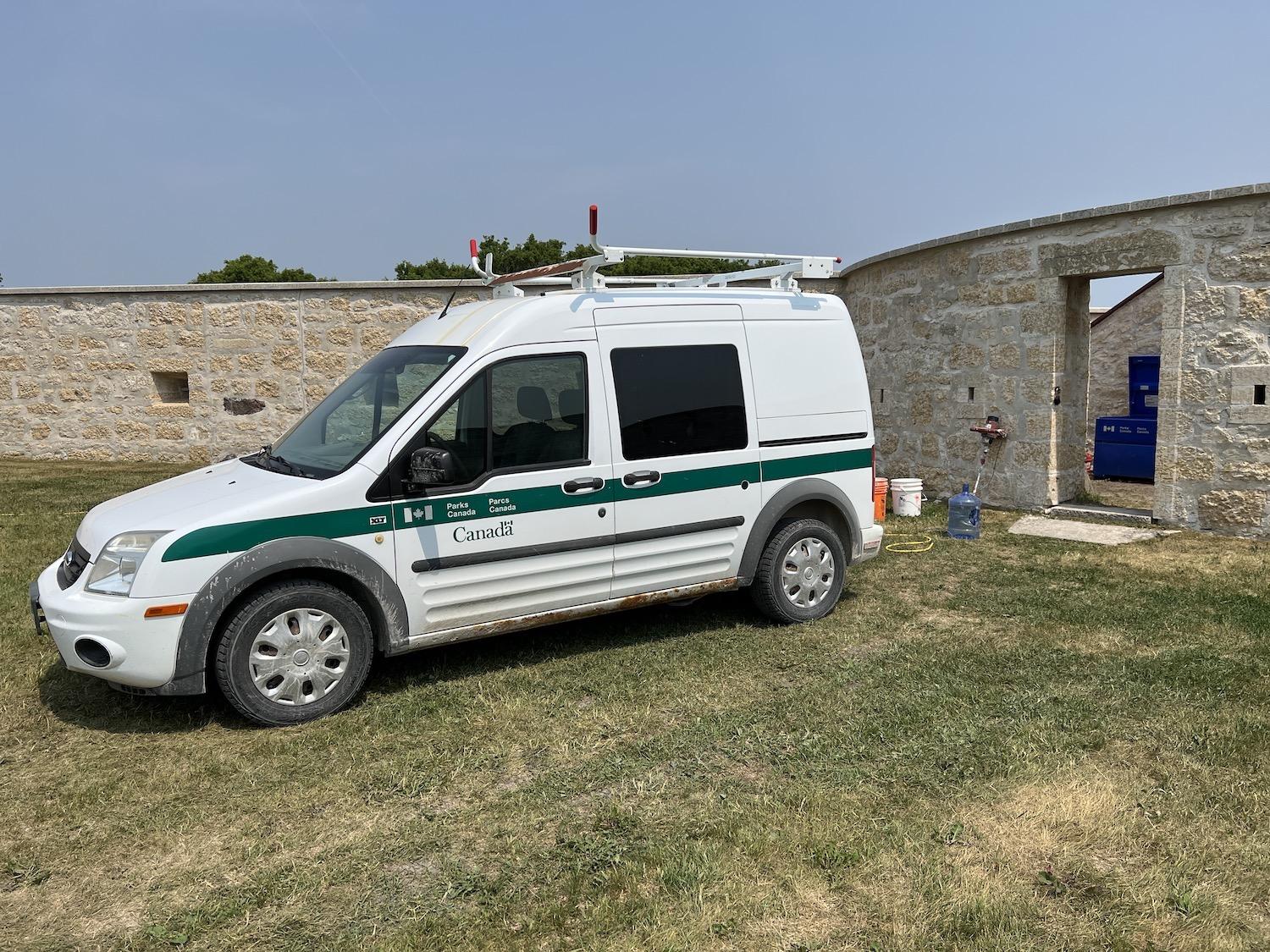
Parks Canada crews work on one of Lower Fort Garry's stone bastions/Jennifer Bain
Lower Fort Garry was a fur trade post established by the HBC in 1832 as its administrative center, but very little fur was ever traded here. Instead, the fort provided agricultural and industrial products for other districts, and served as a trans-shipment point for furs and goods.
While most European buildings between Lake Superior and the Pacific Ocean were constructed of wood during that era, the HBC forts, churches and houses in the Red River Settlement embraced local limestone.
I read how HBC Governor George Simpson loathed wood buildings, calling them “at best miserable fabrics” requiring annual repairs and constant renewals. Stone buildings, on the other hand, provided “respectability and permanence,” and Simpson praised Lower Fort Garry for being “the most respectable looking establishment.” The fort walls and corner bastions were built by stonemasons Duncan McRae and John Clouston with help from soldiers.

The wooden wheel of a Red River cart leans against a Tyndall Stone wall at Lower Fort Garry/Jennifer Bain
Wood had its place, of course. The fort used York boats to transport goods along its growing trade network. Red River carts — pulled by a horse, pony or ox — were equally important on land for fur trade transportation and have become a symbol of the Métis. I linger by examples of both these vehicles just inside the fort’s stone walls.
Lower Fort Garry went on to become Manitoba’s first penitentiary, its first mental health facility, a North West Mounted Police training post and the Manitoba Motor Country Club before being donated to Parks Canada in 1951.
Walls have been extensively repaired and improved. Caulking in control joints prevented the limestone from cracking as the walls shift. Coping stones were added to the top of the walls creating a drip edge to help rain to fall away.
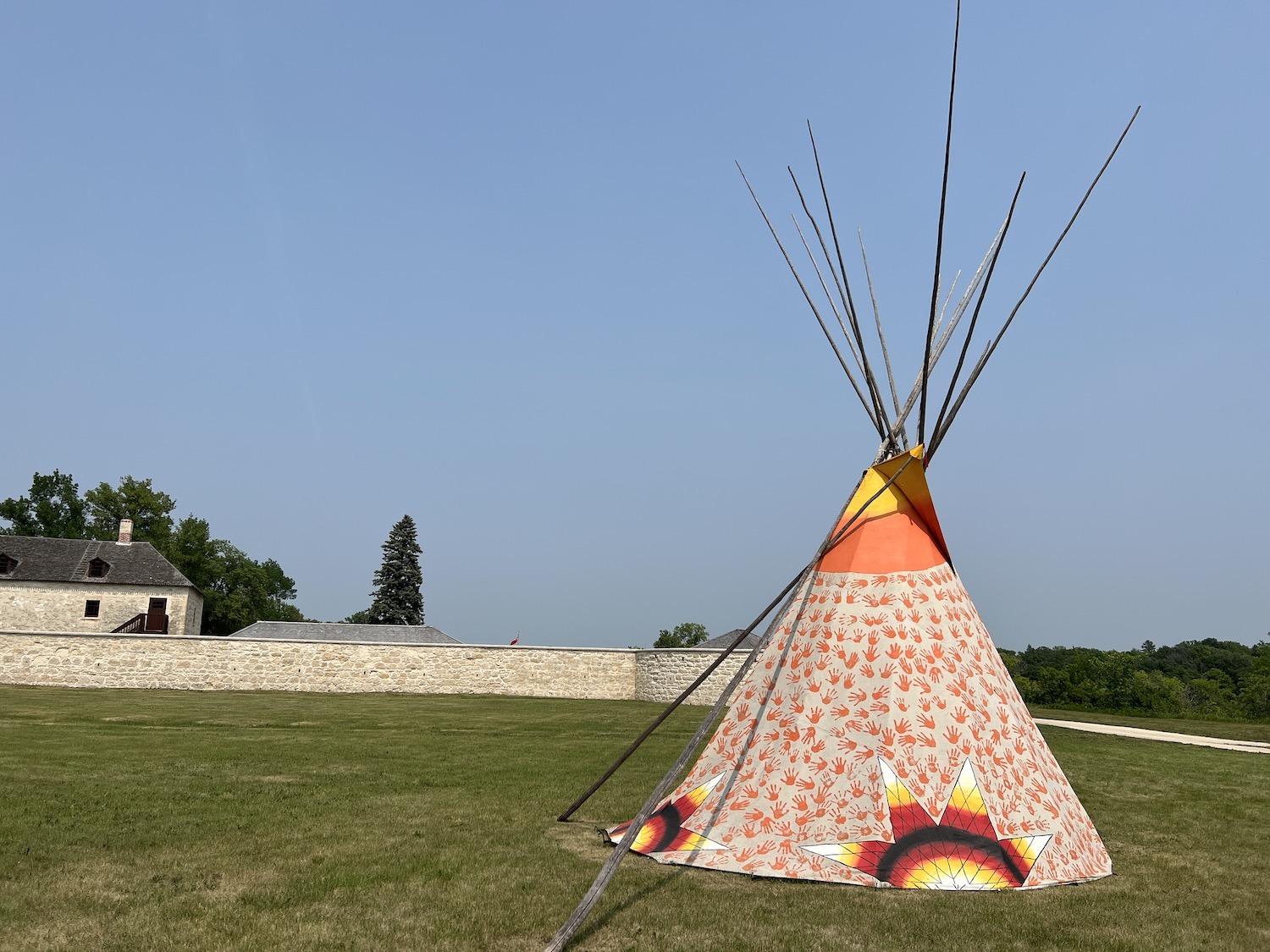
Just outside the limestone walls of Lower Fort Garry National Historic Site is a painted tipi that honors residential school survivors and the memory of those who were lost/Jennifer Bain
The fort takes people back to the booming 1850s fur trade era with costumed interpreters, historical demonstrations, artifacts and storytelling.
I make dip and mold candles with historical interpreter Emma Martens using beef tallow. I talk to heritage presenter Brent Tichon about the character he portrays. At the busy blacksmith shop, I jockey with a school group to hear about the tradespeople that helped built the Tyndall Stone walls and other structures. At the fur loft, I finger the animal pelts that people brought to the HBC.
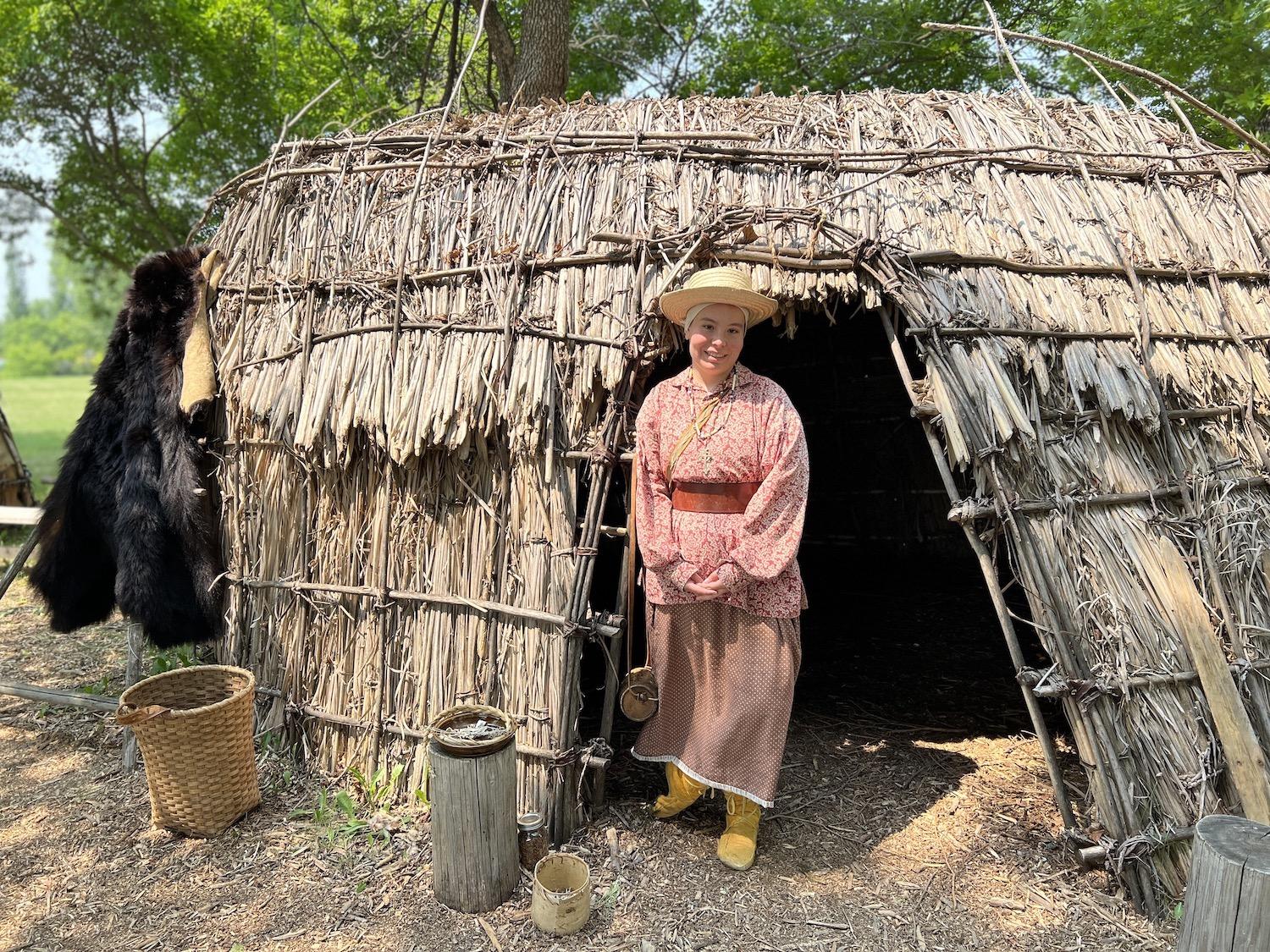
Parks Canada interpretation student Hannah Torchinsky stands at Gabeshiwin Camp at Lower Fort Garry/Jennifer Bain
Indigenous groups occasionally visited the fort to trade, sell goods, work and visit relatives. They typically camped nearby in temporary birch-bark dwellings.
The Gabeshiwin Camp, with its birch bark wigwam and buffalo hide tipi, is housed within the complex so people don’t miss it. It stands in sharp contrast to the stone fort. It’s here where I talk to interpretation student Hannah Torchinsky about the fact that Lower Fort Garry is also where Treaty No. 1 — the first of the numbered treaties that allowed for the expansion of Canada — was signed on Aug. 3, 1871 and is also known as the “Stone Fort Treaty.”
Canada, unfortunately, almost immediately began restricting peoples’ treaty rights and subjected them to the federal Indian Act and other laws.

There's a washroom hidden in the southeast bastion at Lower Fort Garry/Jennifer Bain
Treaty No. 1, between the Crown and seven First Nations, is symbolized here by a Legacy Flag Installation. It's next to a Métis Flag Installation that recognizes the fundamental role of the Métis in creating the province of Manitoba and in the confederation of Canada.
In my final minutes at the fort, I do what the Parks Canada Xplorers’ booklet urges kids to do and visit the northwest bastion and scour the walls for fossils.
Two of the other bastions are blocked off for repairs but the southeast bastion isn’t. Built as an icehouse, it has been discreetly renovated into a fabulous modern washroom that’s quietly housed behind globally significant Tyndall Stone walls.

Historic interpreter Hannah Desjarlais sits on the porch of St. Andrew's Rectory, which is made of Tyndall Stone/Jennifer Bain
Not far south of Lower Fort Garry, on the way back to Winnipeg, I follow the Tyndall Stone story to St. Andrew’s Rectory National Historic Site.
The first thing that historic interpreter Talin Thompson tells me is that the rectory was built in 1854 by Rev. William Cockran and well-known stonemason Duncan McRae (of Lower Fort Garry fame) using limestone from a local quarry. McRae was also working on the church across the road when he was paralyzed by a fall from the roof. However, Thompson says “he was so knowledgeable about stone masonry, and so passionate, that he got carried to the site each day to keep watch on the project and make sure everything was going as planned.”
To backtrack, Protestant missionaries began arriving in Red River in 1820 at the request of the HBC. Cockran began holding religious services in the homes of settlers in 1828 at Grand Rapids (now St. Andrews). “His calling was to bring change to those who lived what he thought was the wanton lifestyle of the fur trade,” interpretive signs explain. “He advocated a practical education, religious observance and European agriculture as the means to salvation.”
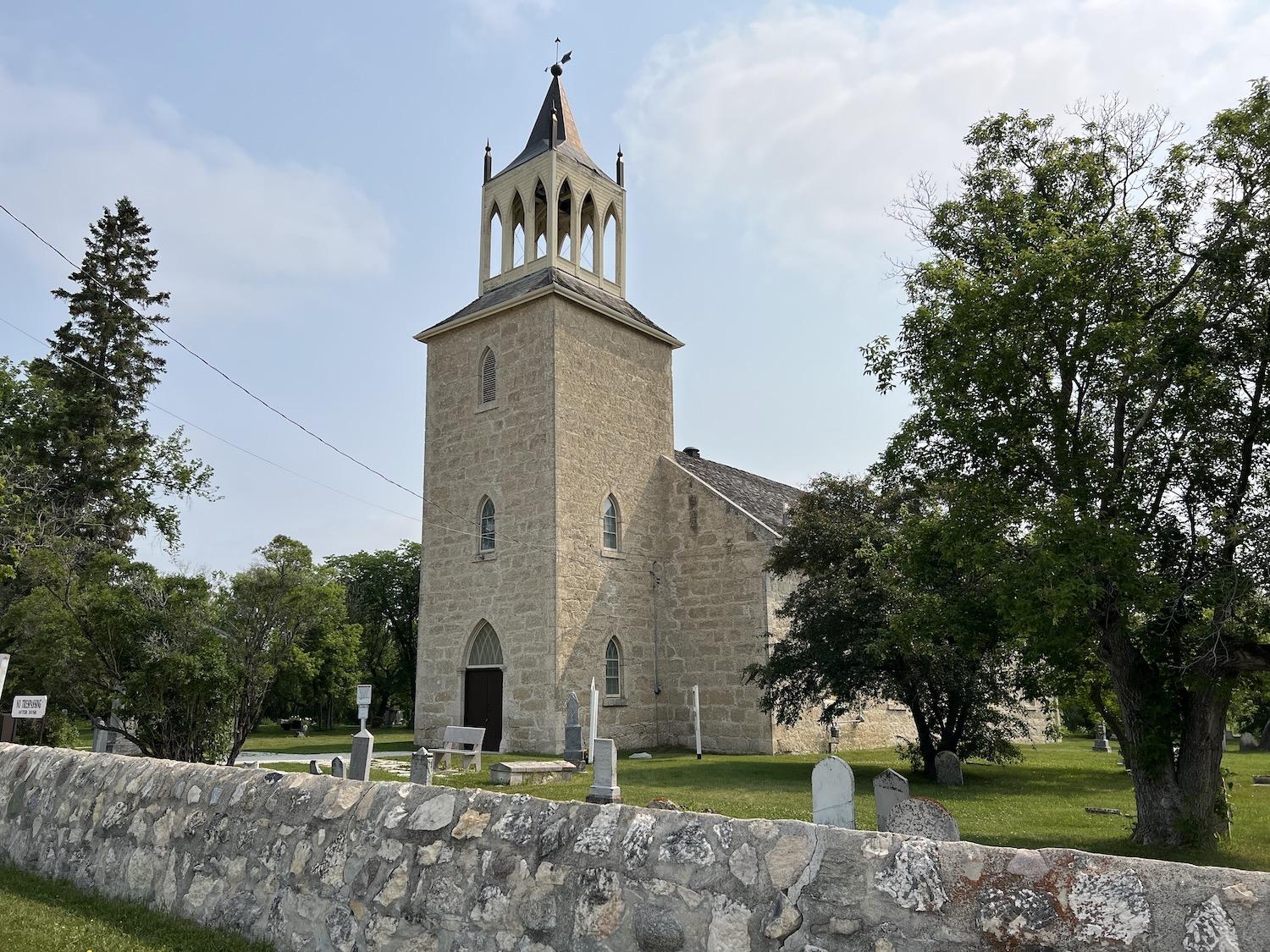
St. Andrew's Anglican Church is a national historic site made of local limestone/Jennifer Bain
Cockran developed a mission along the Red River starting with wooden buildings — a rectory in 1829 and church in 1831. As his congregation grew, he was able to upgrade to a stone church in 1849 and stone rectory in 1854.
St. Andrew’s is now the oldest stone church in western Canada that’s still in active use. It’s also one of the region’s oldest surviving examples of Gothic Revival church architecture. Cockran modelled it after British parish churches with a simple form, massive stone walls, small pointed windows, projecting tower, steep roof and wooden steeple.
The two-storey rectory (minister’s home) is also made of limestone and is now protected as St. Andrew’s Rectory National Historic Site. “Like a number of substantial homes built here for retired officers of the Hudson’s Bay Company,” a plaque explains, “it reflects the style and character of important dwellings at company posts.”

Apparently some of the masonry at St. Andrew's Rectory was done by the rector himself/Jennifer Bain
The limestone blocks for the rectory were roughly cut by stone masons. A mason squared and finished only at the corners and around doors and windows, but apparently Cockran did much of the rest. “When you’re outside, look at the finishing of the stones and mortar here, and then go across the road and compare it to the stonework of the church,” signage tells visitors. “The church was done by professional masons.”
Quarrying, I learn, was backbreaking work. To split stone, people made holes with a drill and hammer, then put in flat shims (feathers) with a wedge called a plug in between the holes. Hammering the wedges, listened for a cracking sound, then stepped back and watched the stone break.
The rectory now houses the St. Andrews Heritage Centre, which tells a sweeping story about the early Indigenous people through the settlers, fur traders and Métis, and runs year-long community programs and a genealogy center on the site’s seven acres.
There’s an 1850’s kitchen that has irons once heated on stoves, and a Victorian parlour with macabre hair wreaths that were popular in that era — but limestone buffs will certainly be drawn to the vintage quarrying and finishing tools.

Quarrying and finishing tools are on display at St. Andrew's Rectory/Jennifer Bain

 Support Essential Coverage of Essential Places
Support Essential Coverage of Essential Places



